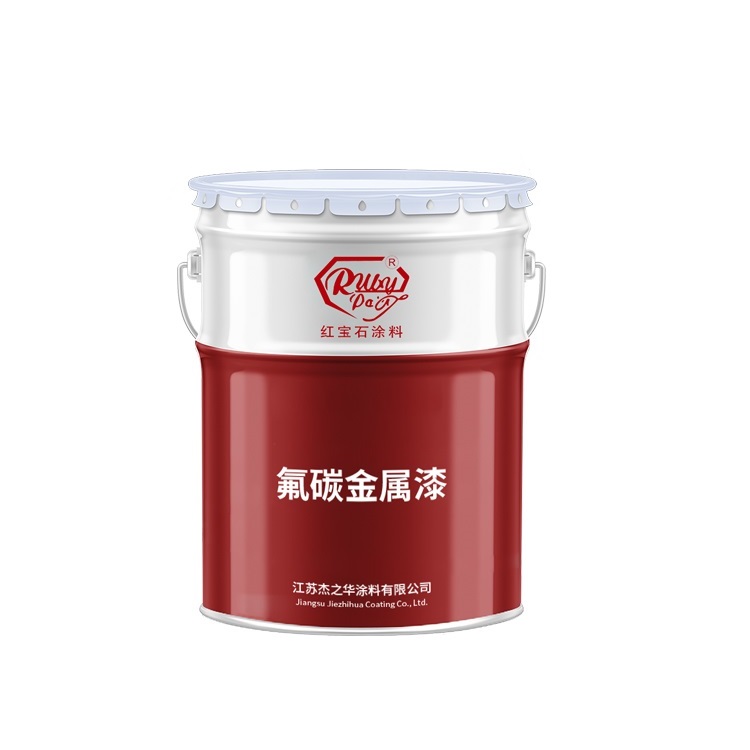Table of Contents
مزايا طلاء الفلوروكربون على الأسطح المصنوعة من الفولاذ المقاوم للصدأ
تقنيات التطبيق لتحقيق الأداء الأمثل لطلاء الفلوروكربون
بمجرد أن يصبح السطح نظيفًا، يجب معالجته لتعزيز الالتصاق. يتضمن هذا غالبًا تخشين السطح من خلال طرق مثل السفع الكاشطة أو الحفر الكيميائي. يؤدي التفجير الكاشطة، باستخدام مواد مثل أكسيد الألومنيوم أو الخرز الزجاجي، إلى إنشاء مظهر سطحي خشن يعمل على تحسين الالتصاق الميكانيكي. من ناحية أخرى، يتضمن النقش الكيميائي تطبيق محلول حمضي على الفولاذ المقاوم للصدأ، والذي يزيل بشكل انتقائي طبقة رقيقة من المواد، مما يعزز الالتصاق الكيميائي بين الطلاء والركيزة.
بعد إعداد السطح، فإن الخطوة التالية هي تطبيق طلاء الفلوروكربون. هناك العديد من التقنيات المتاحة لتطبيق طلاءات الفلوروكربون على الفولاذ المقاوم للصدأ، ولكل منها مزاياها واعتباراتها. إحدى الطرق الشائعة هي تطبيق الرش، حيث يتم تفتيت الطلاء إلى قطرات دقيقة ثم رشه على السطح باستخدام معدات متخصصة. يوفر تطبيق الرش تحكمًا ممتازًا في سمك الطلاء وتجانسه، مما يجعله مناسبًا لمجموعة واسعة من التطبيقات.
من الأساليب الشائعة الأخرى الطلاء بالغمس، حيث يتم غمر الركيزة المصنوعة من الفولاذ المقاوم للصدأ في حمام من مادة طلاء الفلوروكربون. يتم بعد ذلك سحب الركيزة بمعدل يتم التحكم فيه، مما يسمح لمواد الطلاء الزائدة بالتنقيط قبل معالجة الطلاء. يعتبر الطلاء الغمسي مناسبًا بشكل خاص للأشكال الهندسية المعقدة أو الأجزاء ذات التفاصيل المعقدة، مما يضمن التغطية الكاملة والتوحيد لطلاء الفلوروكربون.
بالإضافة إلى الطلاء بالرش والغمس، هناك تقنيات تطبيق أخرى مثل طلاء الفرشاة، والطلاء الدوار، وطلاء الستائر يمكن أيضًا توظيفها وفقًا للمتطلبات المحددة للتطبيق. بغض النظر عن الطريقة المختارة، فإن تحقيق الأداء الأمثل من طلاءات الفلوروكربون على الفولاذ المقاوم للصدأ يتطلب اهتمامًا دقيقًا بعوامل مثل سمك الطلاء، وظروف المعالجة، وعلاجات ما بعد التطبيق.
بمجرد التطبيق، يجب معالجة طلاء الفلوروكربون بشكل صحيح لضمان أقصى قدر من الالتصاق. والمتانة. يتضمن العلاج عادةً تعريض الركيزة المطلية لدرجات حرارة مرتفعة لفترة محددة، مما يسمح للطلاء بالترابط المتبادل وتشكيل طبقة واقية متينة. تعتبر ظروف المعالجة المناسبة، بما في ذلك مستويات درجة الحرارة والوقت والرطوبة، أمرًا بالغ الأهمية لتحقيق خصائص الأداء المطلوبة لطلاء الفلوروكربون.
في الختام، يتطلب تحقيق الأداء الأمثل من طلاءات الفلوروكربون على الفولاذ المقاوم للصدأ تقنيات تطبيق دقيقة تضمن إعداد السطح بشكل مناسب، سمك طلاء موحد، وعلاج شامل. من خلال اتباع أفضل الممارسات واختيار طريقة التطبيق المناسبة للمتطلبات المحددة للتطبيق، يمكن للمصنعين الاستفادة من الخصائص الاستثنائية لطلاءات الفلوروكربون لتعزيز متانة وطول العمر وأداء مكونات الفولاذ المقاوم للصدأ في مجموعة واسعة من الصناعات.
Application Techniques for Achieving Optimal Fluorocarbon Coating Performance
Fluorocarbon coatings on Stainless Steel have become increasingly prevalent in various industries due to their remarkable properties and wide-ranging applications. These coatings offer exceptional resistance to corrosion, Chemicals, and extreme temperatures, making them invaluable in environments where durability and longevity are paramount. However, achieving optimal performance from fluorocarbon coatings requires precise application techniques that ensure uniformity, adhesion, and thickness control.
One crucial aspect of applying fluorocarbon coatings on stainless steel is surface preparation. Proper surface preparation is essential for promoting adhesion between the coating and the substrate, ultimately determining the coating’s performance and longevity. Before applying the fluorocarbon coating, the stainless steel surface must be thoroughly cleaned to remove any contaminants such as oil, grease, dirt, or rust. This is typically accomplished through a combination of solvent cleaning, alkaline cleaning, and mechanical abrasion techniques.

Once the surface is clean, it must be treated to enhance adhesion. This often involves roughening the surface through methods such as abrasive blasting or chemical etching. Abrasive blasting, using materials like Aluminum Oxide or glass beads, creates a roughened surface profile that improves mechanical adhesion. Chemical etching, on the other hand, involves applying an acidic solution to the stainless steel, which selectively removes a thin layer of material, promoting chemical adhesion between the coating and the substrate.
After surface preparation, the next step is the application of the fluorocarbon coating. There are several techniques available for applying fluorocarbon coatings on stainless steel, each with its advantages and considerations. One common method is spray application, where the coating is atomized into fine droplets and then sprayed onto the surface using specialized equipment. Spray application offers excellent control over coating thickness and uniformity, making it suitable for a wide range of applications.
Another popular technique is dip coating, where the stainless steel substrate is immersed in a bath of the fluorocarbon coating material. The substrate is then withdrawn at a controlled rate, allowing excess coating material to drip off before the coating cures. Dip coating is particularly well-suited for complex geometries or parts with intricate details, ensuring complete coverage and uniformity of the fluorocarbon coating.
In addition to spray and dip coating, other application techniques such as brush coating, roller coating, and curtain coating may also be employed depending on the specific requirements of the application. Regardless of the method chosen, achieving optimal performance from fluorocarbon coatings on stainless steel requires careful attention to factors such as coating thickness, curing conditions, and post-application treatments.
Once applied, the fluorocarbon coating must be properly cured to ensure maximum adhesion and durability. Curing typically involves subjecting the coated substrate to elevated temperatures for a specified period, allowing the coating to cross-link and form a durable, protective layer. Proper curing conditions, including temperature, time, and humidity Levels, are critical to achieving the desired performance characteristics of the fluorocarbon coating.
In conclusion, achieving optimal performance from fluorocarbon coatings on stainless steel requires precise application techniques that ensure proper surface preparation, uniform coating thickness, and thorough curing. By following best practices and selecting the appropriate application method for the specific requirements of the application, manufacturers can harness the exceptional properties of fluorocarbon coatings to enhance the durability, longevity, and performance of stainless steel components in a wide range of industries.

